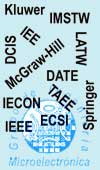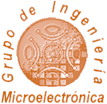
Mapa Web

Localización

Noticias

Info Santander

Gestión BD

|
| GIM>Investigación>Publicación |
| PUBLICACION |
| |
| Ficha completa |
| Título: | Model-Driven Methodology for the Development of Multi-level Executable Environments |
| Tipo: | Capitulo de libro |
| Lugar: | J. Haase (Ed.): "Models, Methods and Tools for Complex Chip Design", Lecture Notes in Electrical Engineering, V.265, Springer |
| Fecha: | 2014-01 |
| Autores: |
Fernando Herrera
Pablo Peñil
Héctor Posadas
Eugenio Villar
|
| Líneas: |
Diseño y verificación de sistemas embebidos HW/SW
|
| Proyectos: |
FP7 IP 247999 COMPLEX
|
| ISBN: | 978-3-319-014180 |
| Fichero: |
|
| Resumen: | Electronic system-level (ESL) methodologies have enabled the development of fast executable system performance models by relying on standard languages such as SystemC. Recent system-level dynamic, that is, simulation-based performance estimation techniques have enabled faster assessment of the design alternatives, and thus the design space exploration (DSE) of complex embedded systems. In this context, the development of system environment models able to reflect common and feasible use cases is crucial for achieving efficient and valid solutions at early design stages. However, such environment modelling can be as or more complex and costly than the system model development itself. The adoption of model-driven development (MDD), component-based design (CBD) and abstraction, can improve the productivity of the environment specification as it does for system specification. In this chapter, a multi-level model-driven methodology for the specification of executable environments is presented. The methodology supports the capture of the environment use cases by relying on the UML standard language and on standard profiles, i.e. MARTE and UTP, and uses UML components for a clean separation of system and environment, and of environment actors. Moreover, a SystemC executable counterpart is automatically generated from the UML-based environment model, coupling the documental and performance analysis levels. The approach is able to capture the communication protocol between system and environment, and also the environment functionality, which can embed either an abstract stimuli generation model, or actual functionality of I/O devices. Thus, different abstraction levels are supported in the functional modeling of the environment.
Chapter |
|
|








